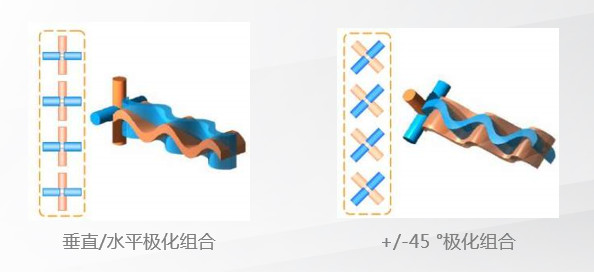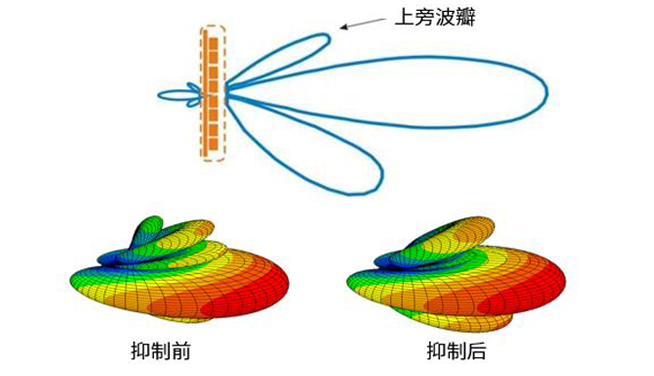Nowadays, in the era of the Internet of Things, RFID technology, which is one of the key technologies, is driving the development of the entire Internet of Things, especially in the fields of smart transportation, logistics and warehousing, intelligent libraries, and unmanned retail. And the antenna is an indispensable part of RFID. So what exactly is the RFID antenna? Today, we have a comprehensive understanding of the antenna principle, directionality, and gain.

What is an antenna
An antenna is a transducer that transforms a guided wave propagating on a transmission line into an electromagnetic wave propagating in an unbounded medium (usually free space), or vice versa. A component used in a radio device to transmit or receive electromagnetic waves.
Radiation electromagnetic wave principle of antenna
When the wire carries an alternating current, it radiates electromagnetic waves, and its radiation capability is related to the length and shape of the wire. If the distance between the two wires is very close, the electric field is trapped between the two wires, so the radiation is very weak; when the two wires are opened, the electric field is scattered in the surrounding space, and the radiation is enhanced. When the length of the wire is much smaller than the wavelength of the radiated electromagnetic wave, the radiation is very weak; when the length of the wire is comparable to the wavelength of the radiated electromagnetic wave, the current on the wire is greatly increased to form a strong radiation. The above-mentioned straight wire capable of generating significant radiation is usually called a vibrator, and the vibrator is a simple antenna.
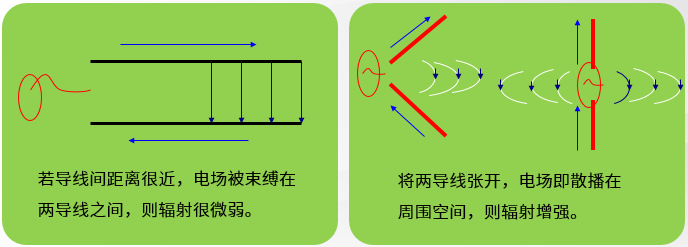
The longer the wavelength of the electromagnetic wave, the larger the size of the antenna. The stronger the power that needs to be radiated, the larger the size of the antenna;
Directionality of the antenna
The antenna radiates electromagnetic waves in a directional manner. At the transmitting end of the antenna, the directivity refers to the ability of the antenna to radiate electromagnetic waves in a certain direction, and for the receiving end, the antenna has the ability to receive electromagnetic waves from different directions.
Antenna pattern
The antenna pattern is a function graph between the antenna radiation characteristics and the space coordinates. Therefore, analyzing the antenna pattern can analyze the radiation characteristics of the antenna, that is, the ability of the antenna to transmit (or receive) electromagnetic waves in all directions of the space. The directionality of the antenna is usually the curve that indicates the magnitude of the electromagnetic wave power radiated (or received) in different directions in the vertical plane and the horizontal plane.

By making corresponding changes to the internal structure of the antenna, the directivity of the antenna can be changed, and thus antennas of different kinds and characteristics can be formed.
A number of symmetrical oscillator arrays are capable of controlling the radiation and further concentrating the signal in the direction of the horizontal plane, resulting in a pattern similar to a "flat bagel".
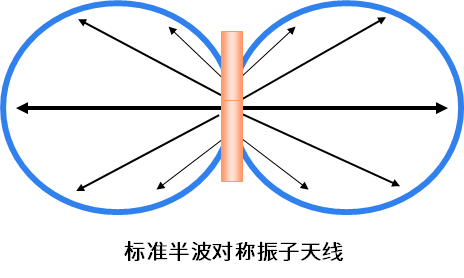
A planar reflector is placed on one side of the array to form a sector covering the antenna. The lower horizontal pattern illustrates the effect of the reflective surface: the reflective surface reflects power to the one-sided direction, increasing the gain.
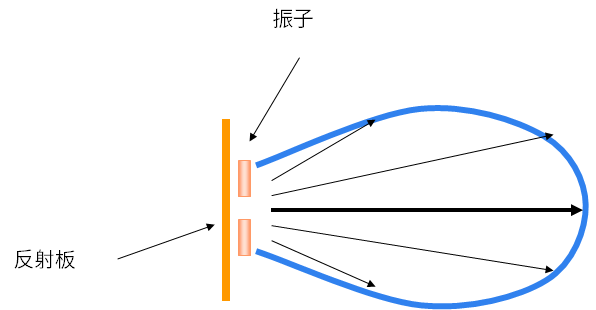
Antenna lobe width
Lobe
The pattern usually has two or more lobes, of which the lobes with the highest radiance are called the main lobes and the rest are called the side lobes or side lobes.
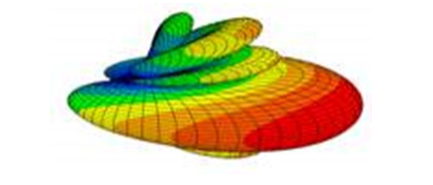
Lobe width
On both sides of the maximum radiation direction of the main lobe, the angle between the two points where the radiation intensity is reduced by 3 dB (half the power density is reduced) is defined as the lobe width (also known as beam width or main lobe width or half power angle).
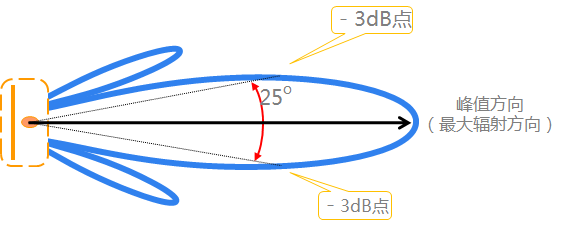
The narrower the lobe width, the better the directivity, and the farther the action distance is, the stronger the anti-interference ability is. There is also a lobe width, which is 10 dB lobe width, which, as the name suggests, is the angle between two points in the pattern where the radiation intensity is reduced by 10 dB (the power density is reduced to one tenth).
Antenna gain
The antenna gain quantitatively describes the degree to which an antenna concentrates the input power. From the perspective of the pattern, the narrower the main lobe, the smaller the side lobes, and the higher the gain. In engineering, the antenna gain is used to measure the ability of the antenna to transmit and receive signals in a specific direction. Increasing the gain can increase the coverage of the network in a certain direction, or increase the gain margin within a certain range. Under the same conditions, the higher the gain, the farther the distance the wave travels.
Gain is the ratio of the power density of the signal produced by the actual antenna at the same point in space as the ideal radiating element, under the condition of equal input power. It quantitatively describes the extent to which an antenna concentrates the input power. The gain is obviously closely related to the antenna pattern. The narrower the main lobe of the pattern, the smaller the side lobes and the higher the gain.
The physical meaning of the gain can be understood in this way: to generate a signal of a certain size at a certain distance over a certain distance, if an ideal non-directional point source is used as the transmitting antenna, 100 W of input power is required, and the gain is G = When a directional antenna with 13 dB = 20 is used as the transmitting antenna, the input power is only 100/20 = 5W. In other words, the gain of an antenna, in terms of the radiation effect in its maximum radiation direction, is a multiple of the input power amplification compared to an ideal point source with no directivity. The gain of a half-wave symmetric oscillator is G = 2.15 dBi. The four half-wave symmetry oscillators are arranged along the vertical line to form a vertical quaternion array with a gain of approximately G=8.15dBi (the unit of dBi indicates that the comparison object is the ideal point source for uniform radiation in each direction).
If the half-wave symmetry oscillator is used as the comparison object, the unit of gain is dBd. The gain of the half-wave symmetry oscillator is G=0dBd (because it is self-ratio, the ratio is 1, and the logarithm is zero.); vertical four The matrix has a gain of approximately G=8.15-2.15=6dBd.
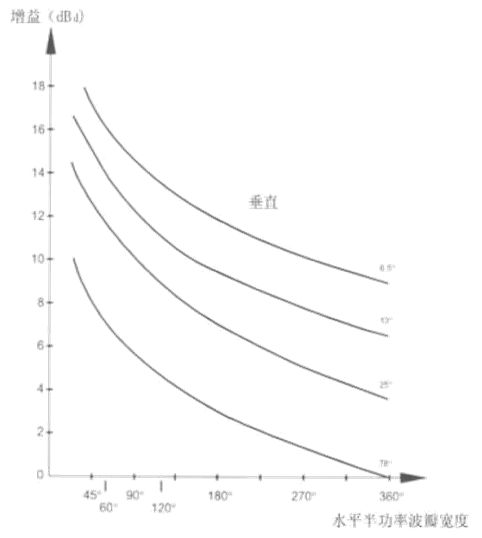
The gain of an antenna compared to a symmetric oscillator is expressed in dBd, and the gain of an antenna compared to an isotropic radiator is represented by dBi.
Upper sidelobe suppression
For wireless coverage antennas, the service target is wireless users on the ground, and the radiation directed to the sky is meaningless. Therefore, it is often required that the first side lobes above the main lobe of its vertical plane pattern be as weak as possible, which is called the upper side lobes suppression.
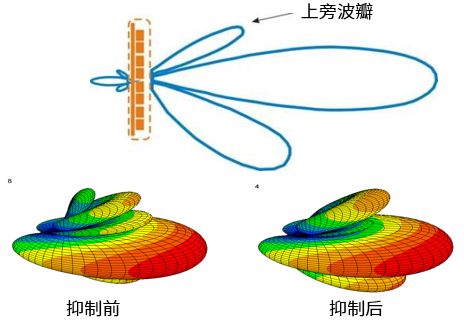
In the pattern, the ratio of the maximum value of the anterior-posterior lobes is called the ratio of the front-to-back ratio, and the reception performance is good
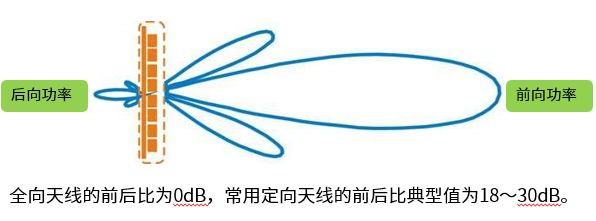
Polarization of the antenna
The polarization of the antenna is determined by the polarization of the electromagnetic waves. The direction of polarization of an electromagnetic wave is usually described by the spatial orientation of its electric field vector, that is, the trajectory of the electric field vector in the spatial direction of the position of the electromagnetic wave as it travels along the direction of propagation of the electromagnetic wave. If the trajectory is a straight line, it is called linear polarization. If it is a circle, it is called circular polarization. If it is an ellipse, it is called elliptically polarized. In general, the direction of polarization of the antenna is the direction of the electric field.
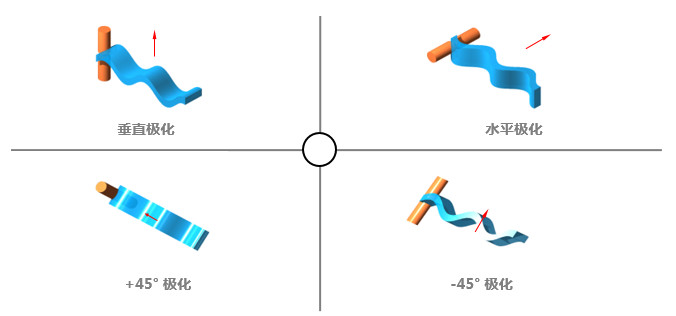
Combining two polarized antennas of vertical polarization and horizontal polarization, or combining two antennas with +45° polarization and -45° polarization, constitutes a new antenna. - Dual polarized antenna. A dual polarized antenna has two connectors.
